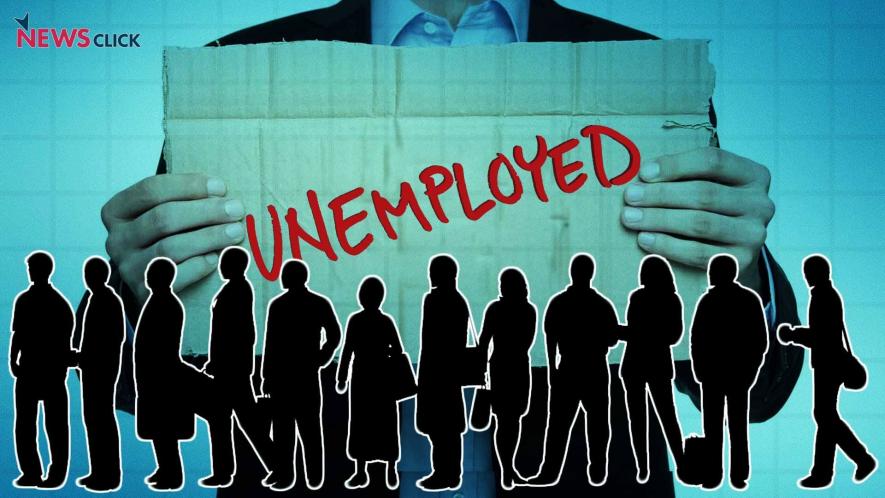India’s Job Crisis Much Severe Than it Seems

The recent student protests across Bihar and Uttar Pradesh over Railway Recruitment Board exams are a symptom of the burgeoning job crisis in India, which is more severe than it looks. It cannot be seen in isolation as a Bihar or UP phenomenon. Yet, these two states offer a textbook example of how things are going wrong with government services and the various recruitment boards, leading to anger amongst the youths. What is most surprising is the indifference of the government to resolve and address the issue.
Let's understand where the fundamental problem lies. Take Bihar as an example, and you can better comprehend why there is an acute job crisis. There are some stark and glaring statistics -- 1.25 core aspirants had applied for over 35,000 posts advertised by RRB for the Group C services. Rough estimates by the state government show that the maximum number of applicants is from UP and Bihar. What explains this craze for the Railways?
Industry is scarce in Bihar, and as a result, there are no private jobs, so what will the educated young men do for a living? Naturally, they run toward government jobs as it guarantees them job security and decent pay. On average, nearly 20 lakh youngsters annually apply for Railways, banks and other government jobs -- such is the level of unemployment in Bihar.
Railways and banks are among the country's most prominent public sector job providers, drawing many from Bihar. Salary for Group D to Group A in the Railways ranges from Rs 17,000 per month to Rs 50,000 per month for freshers, and the amount goes up as they grow in their careers. Imagine someone earning Rs 4,000 a month doing odd jobs can make more than Rs 17,000 just by doing a Group D job in the Railways. This is why we saw mayhem on the streets of Bihar and UP.
There are nearly 1.25 crore people between the ages of 18-23 years in Bihar, who should be going to college, but 50 lakh out of those would be class 10 pass, nearly 35 lakh would be class 12 pass and only 25 lakh or so will be graduates. A vast number of school dropouts also make up a large chunk of unemployed youth, and those who are educated have just one way to get employment — government jobs.
The simple fact is that these aspiring students look for government jobs, but the number of sarkari naukris has declined due to increased privatisation, digitisation and automation. The Union Public Service Commission or UPSC, which offers elitist jobs, has seen its vacancies dwindle. According to a reply given by the government in Lok Sabha last year, there is a dip of almost 30% in UPSC jobs. I spoke to a DoPT (department of personnel & training) official, who said on the condition of anonymity, that a significant factor in deciding any recruitment or vacancies is cadre management. The government has to keep in mind the career progression of its recruits, and that's why there is a downward trend.
Apart from UPSC, there are several other recruitment boards. The case of the Staff Selection Commissionor SSC is worse. There were 20,000 vacancies in SSC in 2013, which declined to 12,000 in 2018 and there are currently 8,000-9000 vacancies only. Shady administrative processes, lack of honesty in conducting exams, and the government's inability to create jobs have led to the students raising their voices. Irregularities in the RRB NTPC exams are just the tip of the iceberg.
A committee has been constituted to examine the concerns of the students who appeared for the RRB NTPC exams, but the government already knows the problem. Formation of a committee just before the Assembly elections is a time-buying tactic to avert the crisis. Is the government really serious about addressing the problems of lakhs of students? Perhaps, no. Had it been serious, there would have been a time-bound process that could have been easily followed.
The latest Centre for Monitoring Indian Economy data shows that the unemployment rate has crept up to 8%, which clearly illustrates that the government has been unable to create jobs. Coupled with this process is the downsizing of vacancies. Seemingly, it's a volcano waiting to erupt in the form of a nationwide movement, and if it does, it could be the biggest thorn in the flesh of the Narendra Modi government.
The writer is a Delhi-based freelance journalist. Views are personal.
Get the latest reports & analysis with people's perspective on Protests, movements & deep analytical videos, discussions of the current affairs in your Telegram app. Subscribe to NewsClick's Telegram channel & get Real-Time updates on stories, as they get published on our website.























